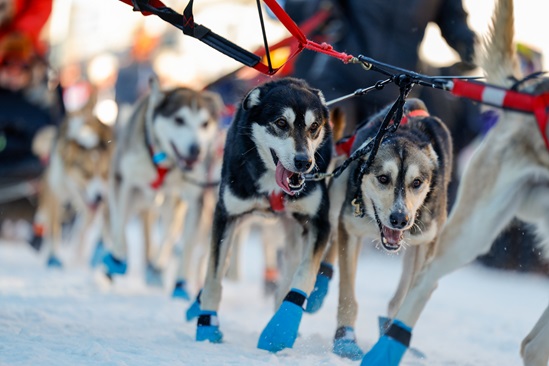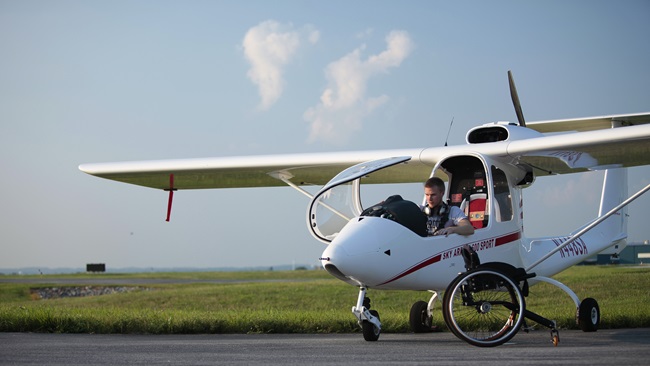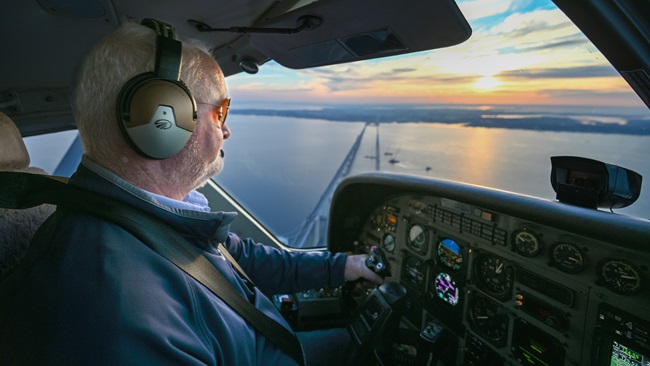First Look: Aerial tributes
Flyovers keep our spirits soaring
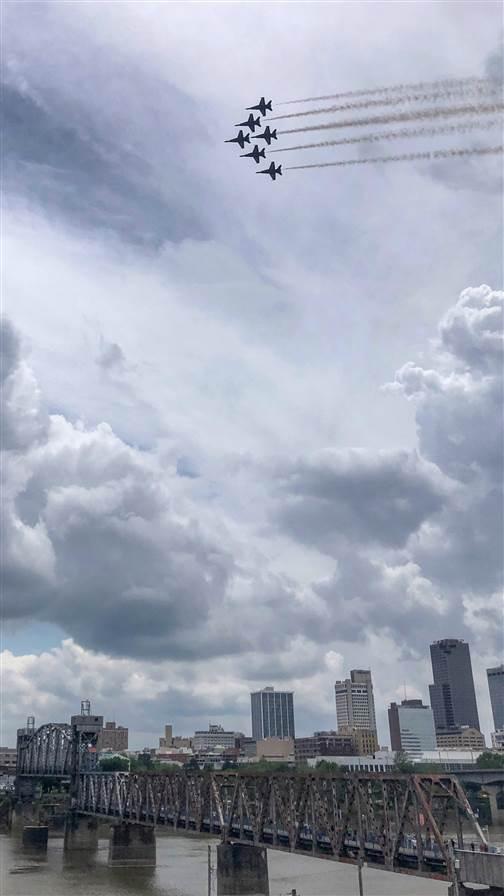 This may be hard to believe: The first military flyover in the United States occurred in 1918. It was game 1 of the World Series—Chicago Cubs versus the Boston Red Sox. Babe Ruth at bat. And 60 U.S. Army biplanes flew over Chicago’s Comiskey Park.
This may be hard to believe: The first military flyover in the United States occurred in 1918. It was game 1 of the World Series—Chicago Cubs versus the Boston Red Sox. Babe Ruth at bat. And 60 U.S. Army biplanes flew over Chicago’s Comiskey Park.
In this time of the COVID-19 pandemic, the flyover has become the symbol for support and assurance of safety. It was designed to be exactly that, as well as provide a training platform for military aviators to maintain currency and competency. The branches of the U.S. military include in their budgets the cost of these flyovers; they are not additional expenses when they take place. The U.S. Air Force defines the flyover: “One straight-and-level pass of one to four aircraft of the same type from the same military service not involving aerobatics or aircraft demonstrations.”
The U.S. Navy Blue Angels (established in 1946) and the U.S. Air Force Thunderbirds (established in 1953) are what we think of when someone says “flyover” and since April 2020, there have been more than 100 sorties of military units in more than 40 states (as of August 2020). These flyovers are offered as support for medical workers on the “front lines” fighting the pandemic.
In a traditional military flyover the formation of aircraft will fly in a holding pattern near the site (football field, stadium, monument) and computers and GPS guide the aircraft to appear at the closing of the playing of the national anthem. When you sing “home of the brave,” here they come (see “Safety Spotlight: Play Ball,” January 2020 AOPA Pilot).
One of the largest historic flyovers was at the signing of the Japanese surrender in World War II. More than 500 aircraft flew over the USS Missouri on September 2, 1945. During the funeral of President George H.W. Bush in 2018, a 21-aircraft salute honored the chief executive and former pilot.
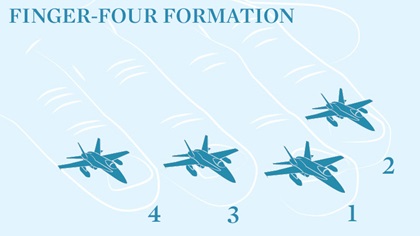 A “missing man” formation flyover is flown to honor those who have died. Flyovers were performed after both the Challenger and Columbia space shuttle disasters. In a missing man formation, the aircraft fly a “finger-four” formation (see illustration). Two pairs of aircraft fly a V-shape formation led by the flight leader at the point. When at viewing level, the number three aircraft quickly pulls up and out of the flight. The remaining airplanes continue straight and level and preserve the gap in the formation where number three had been.
A “missing man” formation flyover is flown to honor those who have died. Flyovers were performed after both the Challenger and Columbia space shuttle disasters. In a missing man formation, the aircraft fly a “finger-four” formation (see illustration). Two pairs of aircraft fly a V-shape formation led by the flight leader at the point. When at viewing level, the number three aircraft quickly pulls up and out of the flight. The remaining airplanes continue straight and level and preserve the gap in the formation where number three had been.
Email [email protected]
A sweet flyover
Happy 100th Birthday, Candy Bomber
 During the Berlin Airlift, Gail “Hal” Halvorsen proved that you can catch more flies with honey (or in his case, refined sugar). He was the original pilot who helped drop 20 tons of candy to German kids from American-built Douglas DC–4s in 1948 and 1949. West German kids called him the Candy Bomber, the Chocolate Pilot, or—because he rocked his wings to alert them to a candy drop—Uncle Wiggly Wings.
During the Berlin Airlift, Gail “Hal” Halvorsen proved that you can catch more flies with honey (or in his case, refined sugar). He was the original pilot who helped drop 20 tons of candy to German kids from American-built Douglas DC–4s in 1948 and 1949. West German kids called him the Candy Bomber, the Chocolate Pilot, or—because he rocked his wings to alert them to a candy drop—Uncle Wiggly Wings.
Halvorsen, who will turn 100 on October 10, talked to youngsters at the airport fence near his base in Berlin one day. He reached in his pocket and found he had only two sticks of chewing gum, so he tore them in half to make enough pieces for four of the children. The four youngsters closest to the fence shared the wrappings with those behind them, carefully tearing them into strips, which other children then licked for the taste. They were so grateful they didn’t feel they could ask for candy, so not a one of them begged for more gum. Seeing that, Halvorsen promised to drop enough gum the next day for the other children.
“How will we know which airplane it is?” they asked.
“I’ll wiggle the wings,” Halvorsen promised. When he did, a huge pack of children began jumping and waving. With each unauthorized drop his crew grew more certain they would get into trouble. Then one of the candy bars nearly hit a Berlin reporter who wrote a story. And mail from kids was already flooding the base. That tipped off the brass at last. Halvorsen was summoned to his commander and lectured on failing to inform his superiors of the operation but was advised to keep dropping the candy. Soon fellow pilots and the British were doing it, stuffing candy into tubes meant to launch flares or heaving candy out the emergency exits in the cabin. —From “He’s the Candy Bomber” by Alton K. Marsh, June 2008 AOPA Pilot
Arsenal of Democracy flyover set for September 25
To commemorate the seventy-fifth anniversary of Victory in Europe (V-E) Day (May 8, 1945) and the Victory over Japan (V-J) Day (September 2, 1945) the Arsenal of Democracy, in conjunction with the World War II 75th Commemoration Committee, will air an online video tribute. The World War II Victory Commemoration Flyover is scheduled to begin at 11:30 a.m. Eastern time on September 25. The first formation is estimated to be over the Lincoln Memorial after 11:30 a.m.
More than 100 World War II-era aircraft are scheduled to fly. The Arsenal of Democracy aircraft will proceed to a holding point about 10 miles west of Leesburg, Virginia, where they will begin the flight down the Potomac River toward Washington, D.C.
As the aircraft approach the Lincoln Memorial, they will turn east and proceed down Independence Avenue. At the completion of the flyover of the World War II Memorial, the aircraft will turn south and begin their flight down the Potomac River and back to their departure airports.

